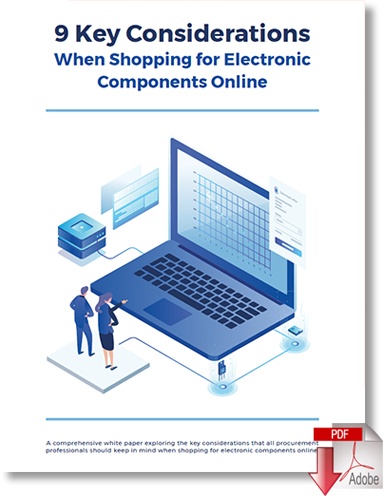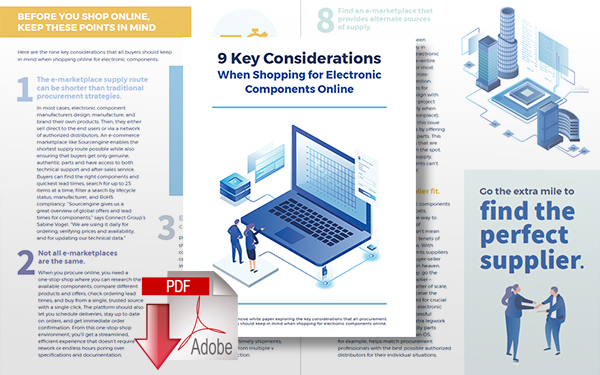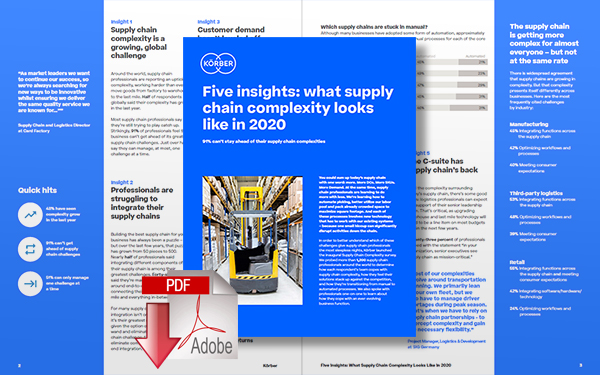3 Ways Digitalization Can Help Mitigate the Complexities of a Post-COVID-19 Supply Chain

Although supply chain managers understand that new technology can make the process easier, choosing the right tools can be difficult, thankfully, there are three digitalization solutions procurement specialists can utilize to address the challenges of the “next normal.”
Struggling with Complications in Production and Logistics Operations
The Körber Group conducted a survey of 1,200 supply chain specialists and came away with one major discovery: most companies are struggling with new complications in production and logistics operations.
Körber reported 91 percent of its survey respondents said they are having a hard time managing their supply chain complexities. In addition, 48 percent noted the problem got worse in the last year, likely because of the coronavirus pandemic.
Although supply chain managers understand that new technology can make the process easier, choosing the right tools can be difficult.
Thankfully, there are three digitalization solutions procurement specialists can utilize to address the challenges of the “next normal.”
1. Smart Sensors Provide Greater Logistics Transparency
The Körber study revealed 46 percent of supply chain professionals are concerned about meeting end-market expectations in the post-pandemic landscape. One pressing need many firms encountered is that clients want comprehensive logistics transparency. Because leading online retailers provide detailed shipping updates, clients want the same information from vendors.
Smart sensors can provide small and medium-sized enterprises (SMEs) with end-to-end data on their manufacturing components and products.
After receiving a raw materials shipment, factory staffers can apply barely noticeable RFID or Bluetooth tags to their components. Afterward, supply chain managers can use a connected system to precisely monitor their inventories. They can also utilize the technology to trace the location and status of their outgoing shipments in real-time.
With this information, SMEs can fulfill their clients’ desire for logistics transparency and improve customer satisfaction rates.
And how can procurement specialists manage the input from their smart sensors? By utilizing a user-friendly and multifaceted Enterprise Resource Planning (ERP) software platform.
2. Enterprise Resource Planning Platforms Simplify Technological Integration
For many SMEs, the prospect of integrating new technological resources into their operations, especially in the post-coronavirus economy, is daunting.
The cost of acquiring new tools and the time required to train staff on their use can seem prohibitive right now. Körber’s survey states that 46 percent of supply chain professionals are struggling with integrating new hardware and software into their operations. But smart sensors can optimize a company’s logistics operations, and an ERP platform can improve the entire organization.
For the uninitiated, ERP software allows businesses to share all of their databases in one platform. These programs enable companies to become more integrated and efficient, especially those that operate multiple facilities. ERP platforms can be invaluable for supply chain managers because they collect multiple data streams and present consolidated information in intuitive interfaces.
By using them, professional buyers can quickly address client shipping concerns, prevent stockouts, and identify logistics problems. For instance, procurement specialists can learn if a third-party provider consistently fails to protect their orders during transport using smart sensor data.
After recognizing and resolving this issue, SMEs will reduce their churn rates, enhance productivity, and strengthen their customer relationships.
3. Component Ecommerce Marketplaces Can Improve Production Outcomes
Another key benefit of ERP platforms is that many offer integration with electronic components e-commerce marketplaces.
Recently, events like the 2011 Japanese earthquake and tsunami and the coronavirus pandemic significantly disrupted the global supply chain. When catastrophes occur, firms can find themselves without materials because their suppliers have temporarily shut down or cannot export anything.
When that happens, SMEs have to pause manufacturing operations, and their delivery dates and income streams become uncertain.
Digital electronic parts marketplaces can help companies protect themselves from that kind of disruption.
These services host millions of components listings from thousands of geographically disparate vendors, sourcing from indirect providers a breeze. They also offer Bill of Materials or BOM tools that enable professional buyers to upload their Bill of Materials and receive live offers within seconds.
Moreover, e-commerce marketplaces enable users to complete all their parts shopping while utilizing one familiar interface via ERP integration.
Sourcengine’s newest tool, The BOM Management Tool (see video above), is designed specifically for professional electronic component buyers. Procurement specialists can upload a bill of materials with 2,000 line items and receive instant quotes from thousands of traceable vendors. The BOM Tool is free and easy to use.
In this way, supply chain managers can use online component marketplaces to keep new product introductions (NPI) on track when worst-case scenarios unfold.
Körber’s survey provides definitive proof that supply chain operations have become more complex in the post-pandemic landscape. But while those new complications can feel overwhelming, procurement specialists should know that new technology makes things easier. Specifically, it provides SMEs with the foundation for more efficient, productive, and profitable futures.
Related White Papers
9 Key Considerations When Shopping for Electronic Components Online
A comprehensive white paper exploring the key considerations that all procurement professionals should keep in mind when shopping for electronic components online. Download Now!
The State of Supply Chain Complexity Report
In order to better understand which challenges give supply chain professionals the most sleepless nights, Körber launched the inaugural Supply Chain Complexity survey. Download Now!
More Resources from Sourcengine
Related Article: 2021 Predictions & Expectations for the Semiconductor Sector
Article Topics
Sourcengine News & Resources
The Impact of Inflation on the Electronics Components Supply Chain Industry How Rising Inflation is Disrupting the Electronics Components Supply Chain Semiconductor Q2 2022 Lead Time Report Global Electronic Component Shortage - May Update Semiconductor Q1 2022 Lead Time Report Global Electronic Component Shortage - March Update Predictions for the 2022 Global Semiconductor Sector More SourcengineLatest in Technology
The Top 10 Risks Facing Supply Chain Professionals Walmart’s Latest Service: Ultra Late-Night Delivery South Korea Finally Overtakes China in Goods Exported to U.S. SAP Unveils New AI-Driven Supply Chain Innovations U.S. Manufacturing is Growing but Employment Not Keeping Pace The Two Most Important Factors in Last-Mile Delivery Spotlight Startup: Cart.com is Reimagining Logistics More Technology















